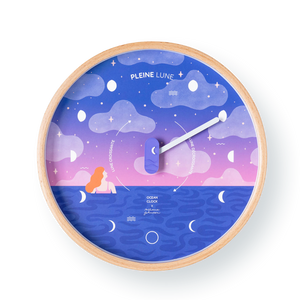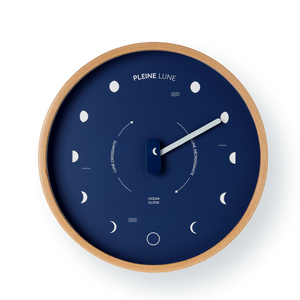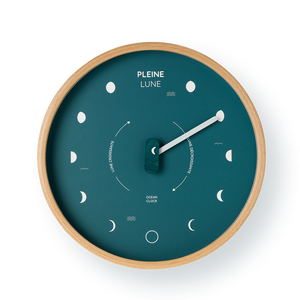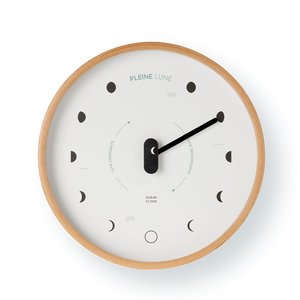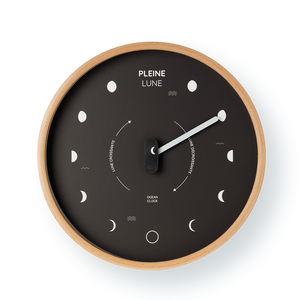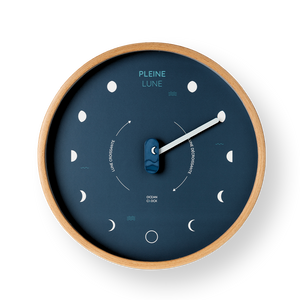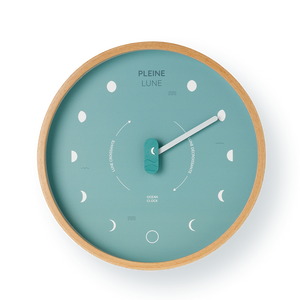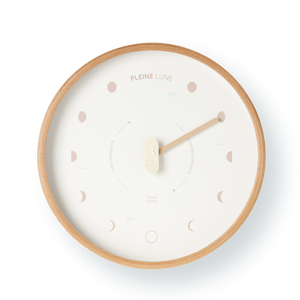The ocean : what is better than contemplating waves ? You probably got surprised one day when the water level interrupted your sunbath and soaked your towel, and you probably asked yourself why the tide goes up and down ! In this article, we will explain to you tides phenomenon.
What is a tide about ?
Before we get into details concerning the origin of tides (without using complicated scientific explanations), let us start by answering a simple question : what is a tide ? It is a regular motion of the sea’s and ocean’s level. This phenomenon makes the water either go up or down. So how do tides work ?

You do not have a clue when the tide will get high or low ? It is for you a real conundrum to decide when to have a walk on the beach or have a swim during your favourite tide ? Think of the tide clock! Essential tool for your seaside outings, it will indicate you the tidal state at a glance.

© Studio 255
The way tides work is not simple as there are many factors to take into account : it is mainly due to the Moon’s and Sun’s gravitational pull exerted on the Earth.
Tides are strongly influenced by the gravitational force of the Moon (due to its proximity with the Earth). Its pull exerted on our planet attracts the water toward it.
As for the Sun, it attracts the water surface the same way, but slightly less than the Moon does (as it is further away). They are not the only ones which affect the ocean and sea levels.
Our beautiful planet Earth also plays a role in the tides phenomenon. When you turn, your car is attracted to the road outside, it works the same way with water surface !
Water surface moves away from the Earth’s centre which is a phenomenon caused by the Earth itself when it rotates: it is called the “centrifugal force”.

© timeanddate.com
But what really happens when it is high tide ? And what is low tide and high tide ?
A simplified explanation : the tide gets high when the sea or ocean is closer to the Moon (as the water is strongly attracted by it). The tide will get low once the water surface is no longer in front of the Moon and attracted by the centrifugal force. Interestingly, other factors have an impact on tides : water surface’s size, weather…

From now on, you will not see the Moon the same way as you used to and you will now look at its position before you decide to swim or surf.
Why are there two tides per day ?
Now that you have understood how tides work, we are going to discuss tidal cycles.
In theory, there are two low tides and two high tides a day (Earth’s rotation). This kind of tide is called “semi-diurnal”. This means that the level of both high tides are almost even, and it is the same thing with both low tides. This phenomenon can be observed in the Atlantic Ocean.



All oceans have a tidal cycle. However, there are different types of tides throughout the planet. Generally, tides are semi-diurnal (as mentioned before) and semi-diurnal/uneven diurnal. This scientific expression means that there are two high tides as well as two low tides, but they can be very different from one another. It is the case on the west coast of the United States.



Some tides are called “diurnal”, which means that there are only one high tide and one low tide within 24 hours, and some are called “mixed” (diurnal tides and semi-diurnal tides). However, the latter only concern very few seas in the world. If you wish to know more about the type of tides close to you, look it up on the site of the Naval Hydrographic and Oceanographic Service.
You want to learn more ? Well then wait for one of our next “Ocean” articles which will deal with another fascinating topic.

